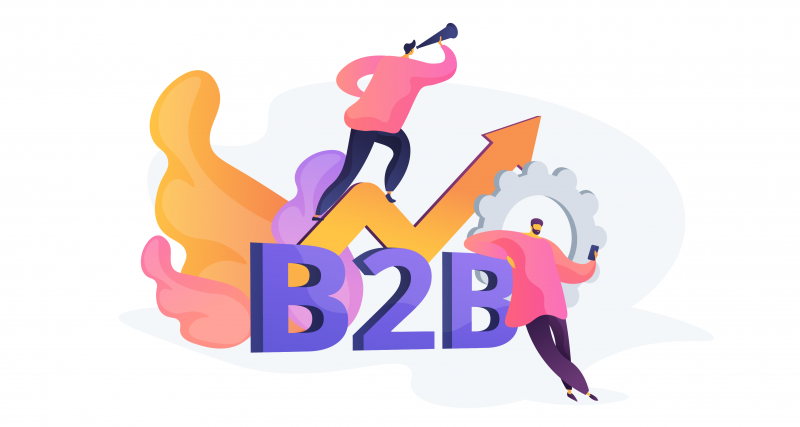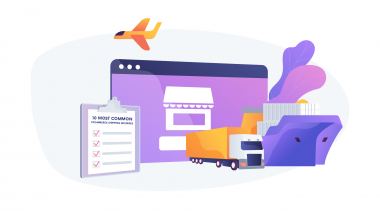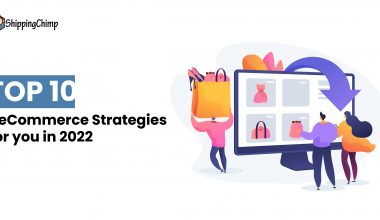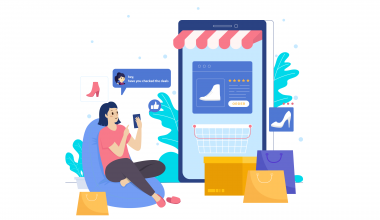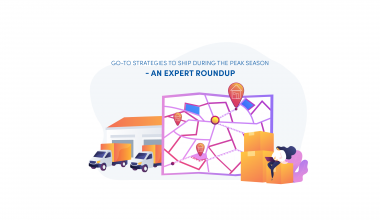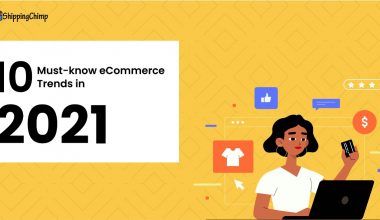The eCommerce trend has been storming the market lately, and B2B eCommerce has become a thing. But developing a B2B business is far from similar to B2C one, and B2B sellers will have a lot of work to do if they want to successfully make their businesses go digital.
Let’s take a look at these 6 tips on how to grow as a B2B eCommerce business.
1. Know who you need to target
As stated within the terms themselves, B2C business (business-to-customer) provides services or products to individual customers, while B2B (business-to-business) ones offer their services to other businesses, not consumers. To deeper analyze the difference in target customers between the two, let’s take a look at two factors called the decision-making unit and the decision-making process.
In the B2C environment, the decision-making unit typically consists of an individual, a couple, or a family. In most cases, it is just a single person. This person’s decision-making process in buying a product is usually short and simple. The cheaper the purchase is, the less time he will take to consider before deciding. There is also a possibility that he makes impulsive purchases that are heavily influenced by his emotions and outside factors.
(Source:https://www.pexels.com/)
Meanwhile, a B2B business’ decision-making unit normally consists of key persons of an organization or company. Those include the chairman, the CEO, or just the business owner in general. Since B2B transactions are usually of high value, these people would not let emotion get in the way. Thorough consideration and analysis of every single aspect must be done before they can come up with a decision. Many big companies even design their own guidelines about the decision-making process.
It is this small group of decision-makers of a company that you need to target while doing B2B business. It does not matter who the end-user of your product is but the buyer. Therefore, B2B marketers should make sure that all of their marketing efforts are geared towards this small group of decision-makers.
2. Proper fulfillment process flow
Generally speaking, both B2B and B2C businesses follow the same retail fulfillment process. However, B2B fulfillment must comply with many strict rules and regulations that if not followed properly, it may result in penalties and losses. Let’s take a look at what a B2B business should expect from its fulfillment provider to streamline its fulfillment process.
First and foremost, you should see if your fulfillment provider is EDI compliant. EDI compliance (Electronic data interchange) is the electronic interchange of business information using a standardized format. In short, it is the process which allows companies to communicate electronically. It helps you go paperless and smoothen your fulfillment flow. For eCommerce businesses, EDI compliance is a must.
Order dashboard is another feature you need to look for while choosing your fulfillment provider. It is an all-in-one technology that allows you to monitor your fulfillment process, including tracking your current orders, placing new ones, etc. It makes it easier for you to spot any existing weak link in your process flow, hence future improvement.
Last but not least, you should go with a provider which is highly responsive in customer service. Problems can always happen with orders, especially for B2B ones since there are many regulations to comply with. Therefore, you want to make sure that your fulfillment provider is capable of handling these issues quickly and efficiently. This is a very important factor for it largely decides whether the provider is worth doing long-term business with.
3. Social Media Interaction
When it comes to B2B business, using social media as a marketing tool is seriously underrated. It is a common norm that social platforms work best for B2C businesses. While this is true, B2B can benefit from social media just as much as B2C. A survey by IDC stated that 75% of B2B buyers do research on social media before they make a purchase decision.
Of course, there is a difference between how it is carried out for the two. For B2C businesses, the most effective social platforms used are usually Instagram and Facebook. On the other hand, platforms like LinkedIn or Twitter appear to suit B2B better. These platforms are great places for business owners to not only promote their brands but also connect with experts in the industry. Intel, the world’s tech giant, even runs a Twitter account that is solely meant to do B2B business.
(Source:https://www.pexels.com/)
Still, B2B social media marketing is usually considered boring when it comes to content. A blog post with too many technical terms isn’t likely to make anyone hit the purchase button. Therefore, B2B marketers need to adapt their content to be more social-friendly. Try to write in a more human tone, jump on every trend train out there, produce videos that use a more ear-catching brand voice, etc.
4. Streamlined B2B Training
The scale of B2B business is on another level compared to B2C. The products are way more complex, the customers’ demands are way higher. Therefore, B2B business owners need to provide their sales representatives with proper training and hands-on knowledge of the products so that they can deliver the best service to customers. In the eCommerce world where most shopping activities are done online, the role of sales reps has gradually shifted from being sales-oriented to customer service oriented. That is, to advise and support customers more than try to sell the products themselves.
This shift however requires business owners to restructure their sales department. Since sales reps do not receive a commission from sales anymore, the payment model previously adapted to them is no longer suitable. A sales rep’s salary should now be determined by other KPIs that work better for customer support-oriented jobs. Customer Satisfaction Score (CSAT) and Customer Effort Score (CES) are two commonly used metrics in this case.
5. Optimize SEO of your website
SEO is a great marketing tool that works wonderfully for any kind of business, and B2B is not an exception. However, due to its unique characteristics, the SEO strategy used for B2B is a little different from its B2C counterpart.
As stated above, the target customer of B2B businesses is a small group of decision-makers of a company. These people can be CEOs, company marketing managers, etc. Therefore, the SEO strategy should be deployed revolving around this particular group of people. This makes a huge difference.
(Source:https://www.pexels.com/)
For example, you should focus on publishing content that is of high value to this type of customer. Your blog pages are expected to have answers to their questions, be it easy or difficult. The content has to be unique, precise and highly tactical.
In terms of keywords, B2B SEO should only target low-volume, high-value keywords. This is because the world of B2B business is smaller than B2C, so it is better to focus on quality rather than quantity. Since B2B keywords are not popular ones, marketers need to have great keyword research skills in order to not miss out on potential search queries. A keyword with 10 searches per month could become a gold mine if exploited correctly.
6. Improve Web design and usability
Web design and usability play an important role in improving your customers’ experience. A properly designed website shall leave a good impression in visitors’ eyes. This is applicable for all kinds of businesses, not just B2B.
In order to deliver the best customer experience, focus on building features that would simplify your customer journey while exploring your website. The very first thing you need to do is to adopt a friendly layout that is easy to use. You would want your customers to easily navigate through your website without any trouble. Do not overuse call-to-action buttons and only place them at appropriate spots. Everything should be presented clearly within sight.
Secondly, arm your website with key features that a B2B site should have. One of them is bulk ordering. Nearly all B2B customers place large orders. This feature helps to simplify the ordering process by a mile. Customers won’t have to waste time handpicking products from your catalog anymore.
Another important feature is personalized pricing. Normally, the more you buy from a store, the more likely you are to receive a discount. This is commonly applied in retail. Therefore, it would be silly if such discounts are not incorporated into B2B stores, where customers buy in bulk. You can customize your website to show personalized prices for each customer based on his ordering quantity or the total number of his repeat purchases.
7. Publish useful content
Customers of B2B businesses expect higher from a brand. They hold a skeptical attitude and only decide to buy after they have conducted thorough research about the products. They will only call for help if they can’t find the information they need anywhere on your platforms. In the worst-case scenario, customers will leave without bothering to contact you for further support.
This is why you need to satisfy your potential customers in advance. Save them time and effort by providing them with value-rich content in the first place. Make sure your website contains all crucial information about your product by writing detailed product descriptions. Create blog pages that share useful knowledge about your operating industry and back it up with trustworthy statistics, experts’ opinions, and real-life case studies. By doing this, you not only answer customers’ questions but also prove to them that you are a specialist in the field, who knows what he does and whom they can do business with.
